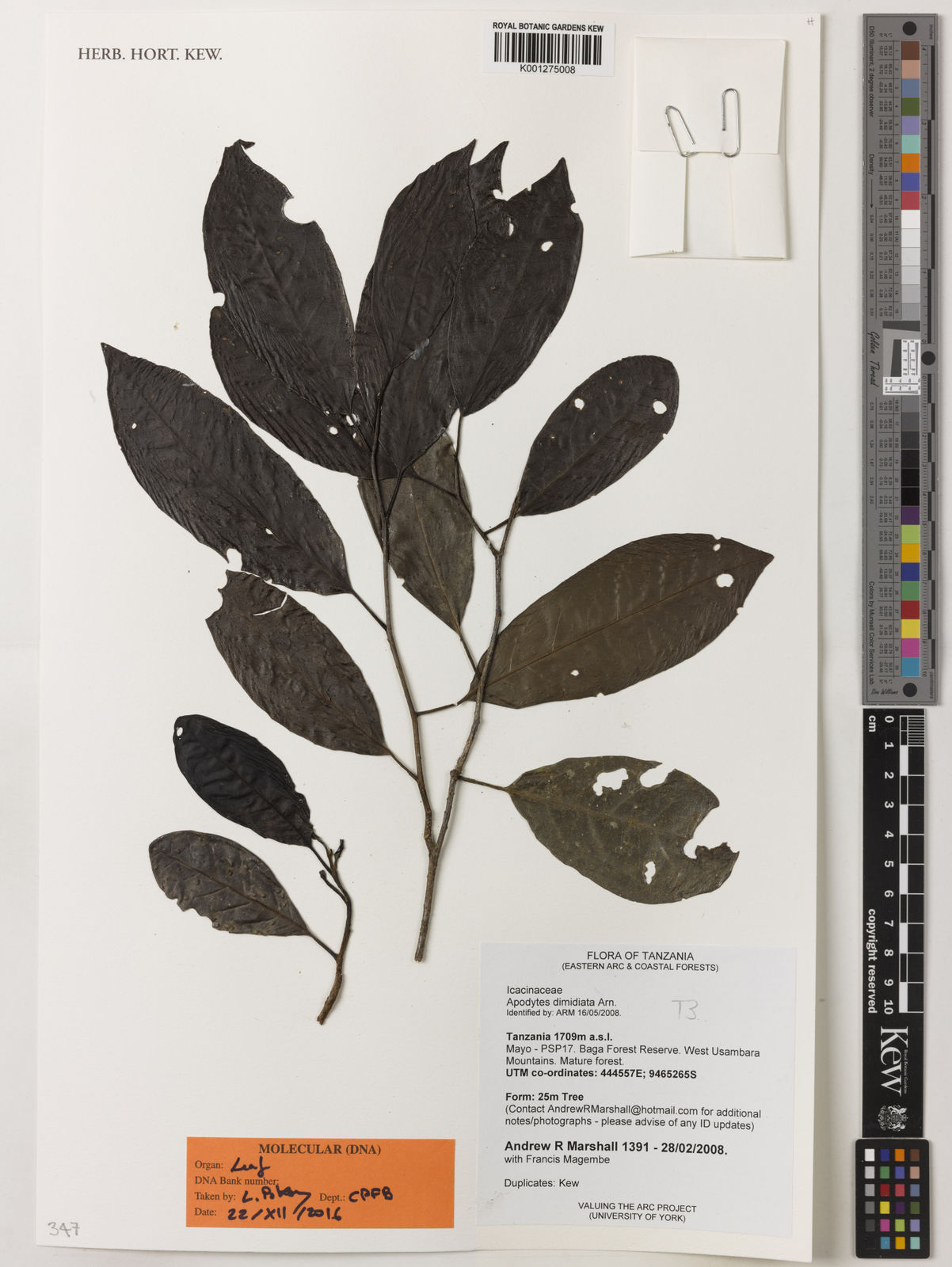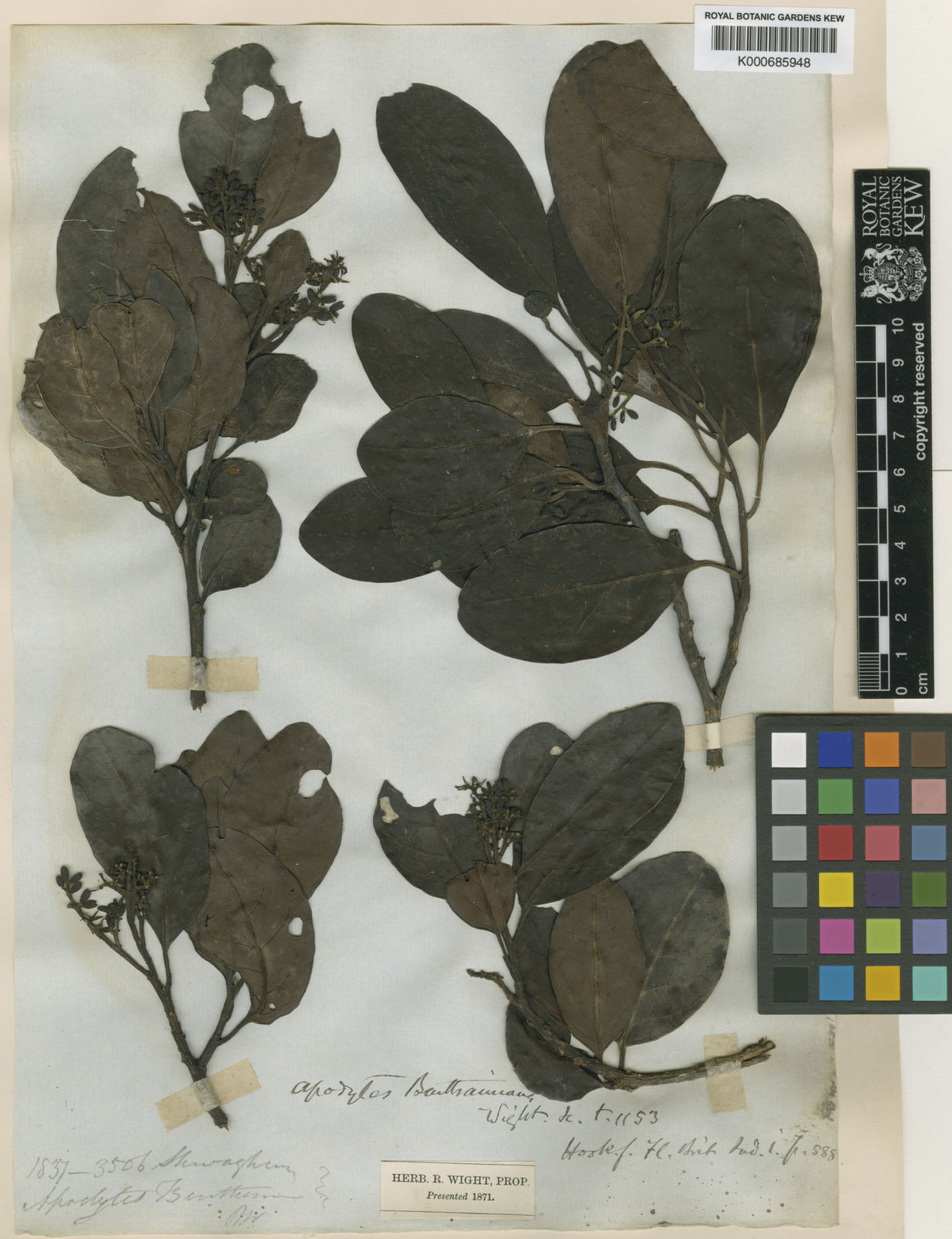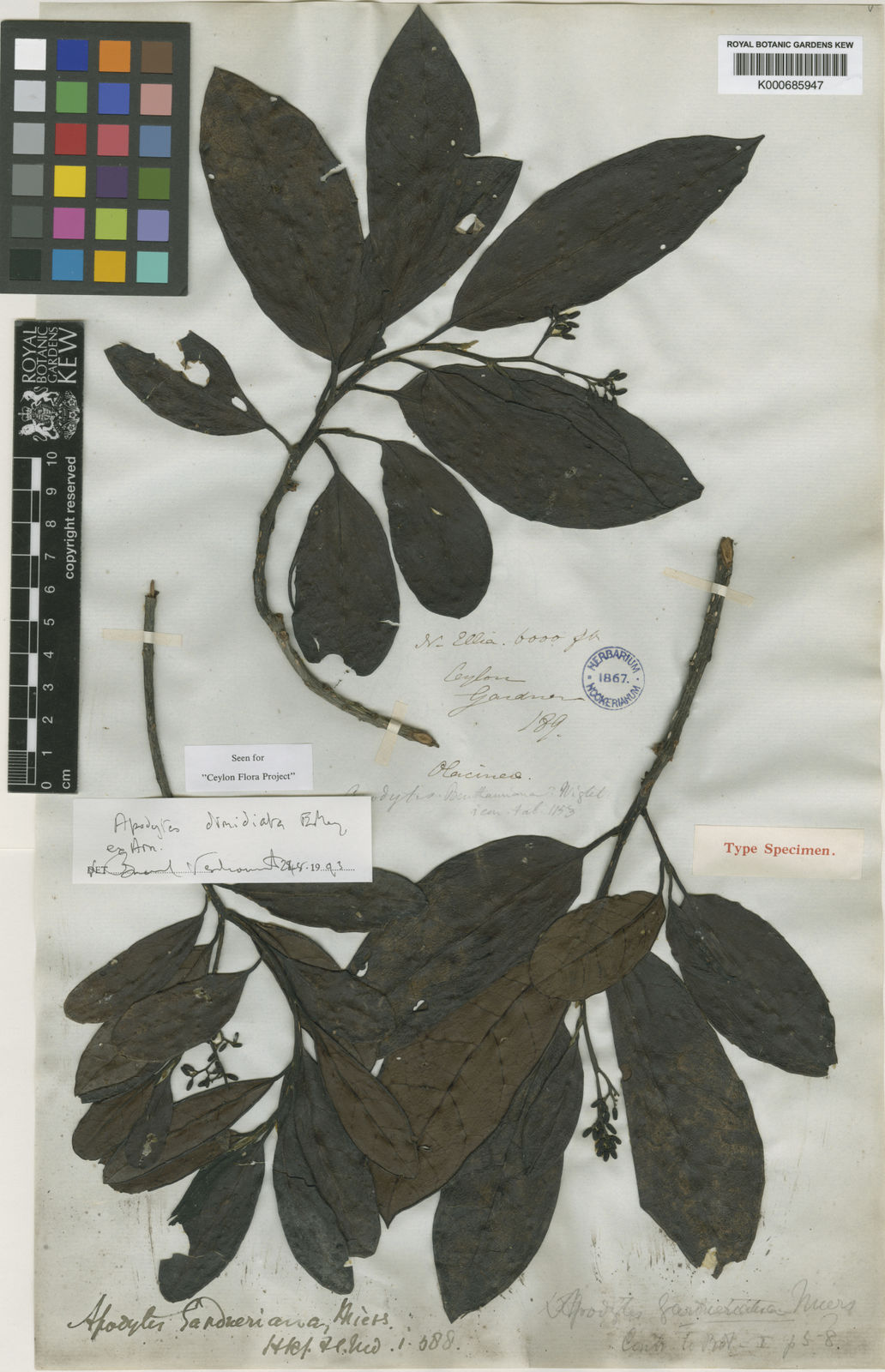Family: Metteniusaceae
Author: E.Mey. ex Arn.
Bibliography: J. Bot. (Hooker) 3: 155 (1840)
Year: 1840
Status: accepted
Rank: species
Genus: Apodytes
Vegetable: False
Observations: Trop. & S. Africa, W. Indian Ocean, China (S. Yunnan, W. Guangxi) to Trop. Asia
Description
White pear, scientifically known as Apodytes dimidiata, is a remarkable tree species belonging to the family Metteniusaceae. This versatile plant thrives across a wide range of regions, including Tropical and Southern Africa, the Western Indian Ocean, and extending to Southern Yunnan and Western Guangxi in China, reaching into Tropical Asia.
Originally chronicled in J. Bot. (Hooker) in 1840 by E. Mey. ex Arn., this tree has garnered attention for its adaptability and various ecological contributions. The white pear is noted for its characteristic white blossoms which add significant aesthetic value to the landscapes it inhabits.
Ecologically, Apodytes dimidiata plays a vital role in its native habitats. The tree is often integrated into conservation efforts due to its durability and ability to support diverse wildlife. Notably, it provides essential food and shelter for numerous bird species and insects, contributing to the ecological balance within its growing regions.
Beyond its environmental importance, the white pear also features in traditional uses by local communities. It is frequently utilized in folk medicine and has been incorporated into various cultural practices, highlighting its significance beyond mere ecological presence.
Overall, the white pear stands out not only for its adaptive growth and environmental benefits but also for its integration into human cultural and medicinal practices across its expansive native range.
Common Names
Mlg: hazonanana, hazombato
En: White pear
Af: Witpeer
Mg: Hazonanana, Hazombato
Ml: കരിനീലി
Synonyms
- Pterocelastrus macrostylus (Hochst. ex Szyszył.)
- Apodytes dimidiata var. acutifolia ((Hochst. ex A.Rich.) Boutique)
- Apodytes dimidiata subsp. acutifolia ((Hochst. ex A.Rich.) Cufod. ex Mendes)
- Apodytes dimidiata f. farinosa (H.Perrier)
- Jobalboa aberdarica (Chiov.)
- Apodytes dimidiata var. emirnensis ((Baker) H.Perrier)
- Apodytes beddomei (Mast.)
- Apodytes benthamiana (Wight)
- Nothapodytes philippinensis ((Merr.) Sleumer)
- Pterocelastrus obtusus (Hochst. ex Szyszył.)
- Apodytes stuhlmannii (Engl.)
- Neoleretia philippinensis ((Merr.) Baehni)
- Apodytes dimidiata var. ikongoensis (H.Perrier)
- Apodytes dimidiata var. hazomaitso ((Danguy) H.Perrier)
- Apodytes acutifolia (Hochst. ex A.Rich.)
- Nothapodytes zeylanica (Kosterm.)
- Mappia philippinensis (Merr.)
- Apodytes dimidiata f. microphylla (H.Perrier)
- Icacina mauritiana (Miers)
- Apodytes dimidiata var. inversa ((Baill.) H.Perrier)
- Hemilobium ficifolium (Welw.)
- Apodytes inversa (Baill.)
- Apodytes javanica (Koord. & Valeton)
- Apodytes bequaertii (De Wild.)
- Apodytes cambodiana (Pierre)
- Apodytes giung (A.Chev.)
- Apodytes curtisii (Dyer ex King)
- Apodytes hazomaitso (Danguy)
- Apodytes mauritiana ((Miers) Planch. ex Baker)
- Apodytes emirnensis (Baker)
- Apodytes frappieri (Cordem.)
- Apodytes tonkinensis (Gagnep.)
- Apodytes gardneriana (Miers)
- Apodytes yunnanensis (Hu)
Distribution
- Aldabra (native)
- Angola (native)
- Assam (native)
- Borneo (native)
- Burundi (native)
- Cambodia (native)
- Cameroon (native)
- Cape Provinces (native)
- China South-Central (native)
- China Southeast (native)
- Comoros (native)
- Eritrea (native)
- Ethiopia (native)
- Hainan (native)
- India (native)
- Jawa (native)
- Kenya (native)
- KwaZulu-Natal (native)
- Lesser Sunda Is. (native)
- Madagascar (native)
- Malawi (native)
- Malaya (native)
- Maluku (native)
- Mauritius (native)
- Mozambique (native)
- Myanmar (native)
- Nigeria (native)
- Northern Provinces (native)
- Philippines (native)
- Rwanda (native)
- Réunion (native)
- Sri Lanka (native)
- Sudan (native)
- Sulawesi (native)
- Sumatera (native)
- Swaziland (native)
- Tanzania (native)
- Thailand (native)
- Uganda (native)
- Vietnam (native)
- Zambia (native)
- Zaïre (native)
- Zimbabwe (native)
- Laos (introduced)
Additional Images
Leaf
Taken Mar 14, 2006 by riviere (cc-by-sa)
Taken Jan 6, 2022 by Bernard REYNAUD (cc-by-sa)
Taken Jun 27, 2022 by robert andre (cc-by-sa)
Taken Jul 12, 2018 by Anziz AHMED ABDOU (cc-by-sa)
Taken Jan 17, 2016 by Manie Maree (©)
Habit
Taken Jan 17, 2016 by Manie Maree (©)
Taken Jan 17, 2016 by Manie Maree (©)
Taken Nov 20, 2012 by S. Dufour-Kowalski (cc-by-sa)
Taken Nov 20, 2012 by S. Dufour-Kowalski (cc-by-sa)
Taken Mar 14, 2006 by riviere (cc-by-sa)
Bark
Taken Nov 20, 2012 by S. Dufour-Kowalski (cc-by-sa)
Taken Nov 20, 2012 by S. Dufour-Kowalski (cc-by-sa)
Taken Nov 20, 2012 by S. Dufour-Kowalski (cc-by-sa)
Taken Nov 20, 2012 by S. Dufour-Kowalski (cc-by-sa)
Taken Jan 6, 2022 by Bernard REYNAUD (cc-by-sa)
Fruit
Taken Jan 17, 2016 by Manie Maree (©)
Taken Jan 17, 2016 by Manie Maree (©)
Taken Jan 17, 2016 by Manie Maree (©)
Taken Jan 17, 2016 by Manie Maree (©)
Taken Mar 16, 2016 by Manie Maree (©)
Flower
Taken Jan 29, 2021 by John Baxter (cc-by-sa)
Other
Taken Mar 14, 2006 by riviere (cc-by-sa)

© copyright of the Board of Trustees of the Royal Botanic Gardens, Kew.

© copyright of the Board of Trustees of the Royal Botanic Gardens, Kew.

© copyright of the Board of Trustees of the Royal Botanic Gardens, Kew.
Sources
- WFO (No URL)
- IPNI (No URL)
- GBIF (https://www.gbif.org/species/3597463)
- POWO (http://powo.science.kew.org/taxon/urn:lsid:ipni.org:names:434212-1)
- PlantNet (https://identify.plantnet.org/species/the-plant-list/Apodytes dimidiata E.Mey. ex Arn.)






















